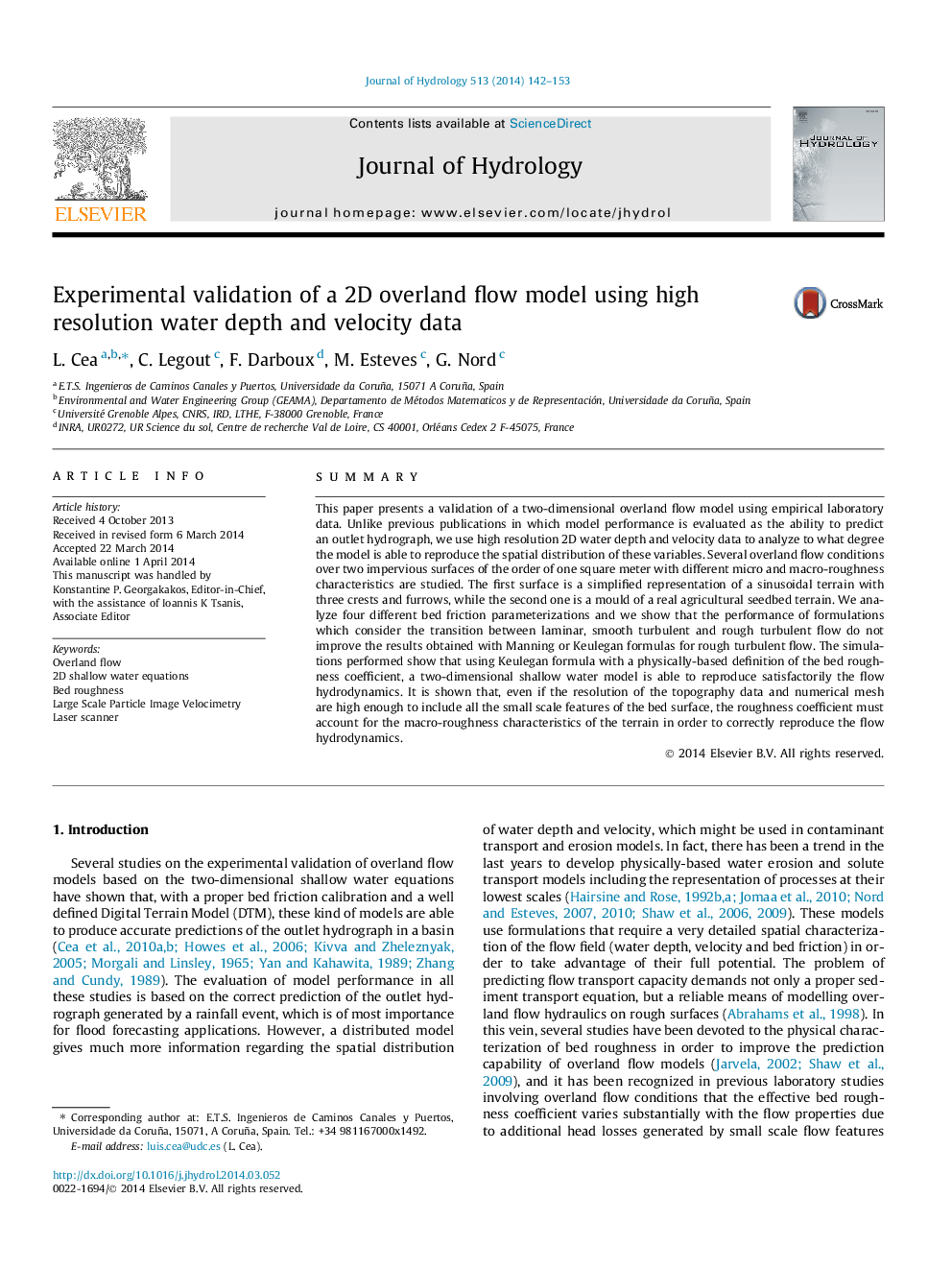| کد مقاله | کد نشریه | سال انتشار | مقاله انگلیسی | نسخه تمام متن |
|---|---|---|---|---|
| 6412722 | 1629935 | 2014 | 12 صفحه PDF | دانلود رایگان |

- A 2D overland flow model is validated using high resolution depth and velocity data.
- Manning and Keulegan formulations produce similar and satisfactory results.
- More complex formulations do not improve model performance.
- The friction coefficient can be related to the micro and macro-rugosity of the bed.
- The model might be used as the hydraulic base of a distributed soil erosion model.
SummaryThis paper presents a validation of a two-dimensional overland flow model using empirical laboratory data. Unlike previous publications in which model performance is evaluated as the ability to predict an outlet hydrograph, we use high resolution 2D water depth and velocity data to analyze to what degree the model is able to reproduce the spatial distribution of these variables. Several overland flow conditions over two impervious surfaces of the order of one square meter with different micro and macro-roughness characteristics are studied. The first surface is a simplified representation of a sinusoidal terrain with three crests and furrows, while the second one is a mould of a real agricultural seedbed terrain. We analyze four different bed friction parameterizations and we show that the performance of formulations which consider the transition between laminar, smooth turbulent and rough turbulent flow do not improve the results obtained with Manning or Keulegan formulas for rough turbulent flow. The simulations performed show that using Keulegan formula with a physically-based definition of the bed roughness coefficient, a two-dimensional shallow water model is able to reproduce satisfactorily the flow hydrodynamics. It is shown that, even if the resolution of the topography data and numerical mesh are high enough to include all the small scale features of the bed surface, the roughness coefficient must account for the macro-roughness characteristics of the terrain in order to correctly reproduce the flow hydrodynamics.
Journal: Journal of Hydrology - Volume 513, 26 May 2014, Pages 142-153